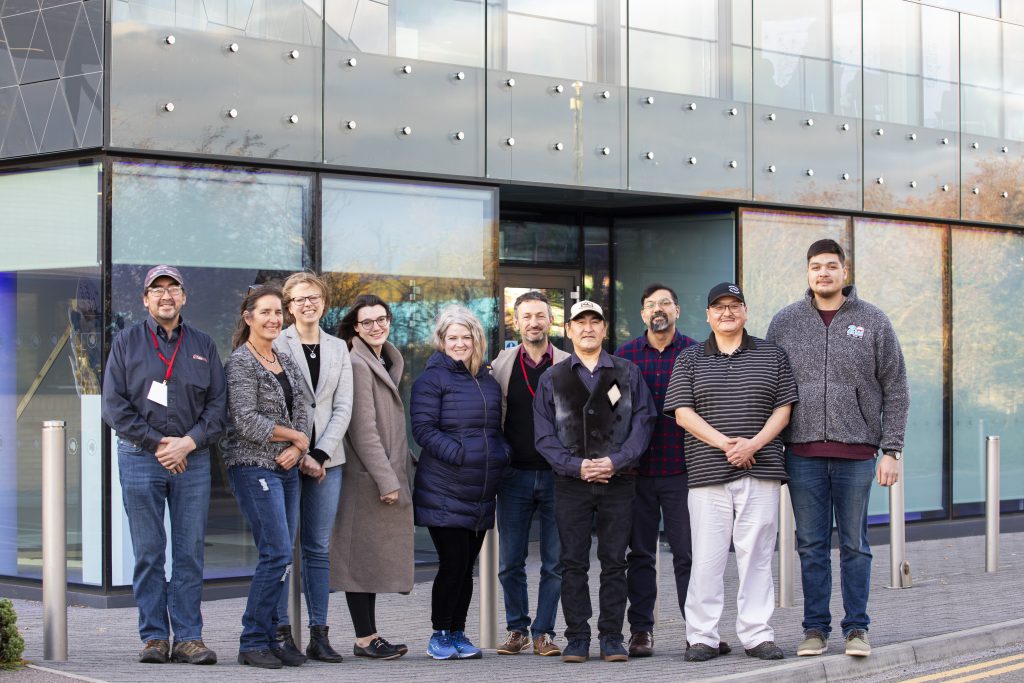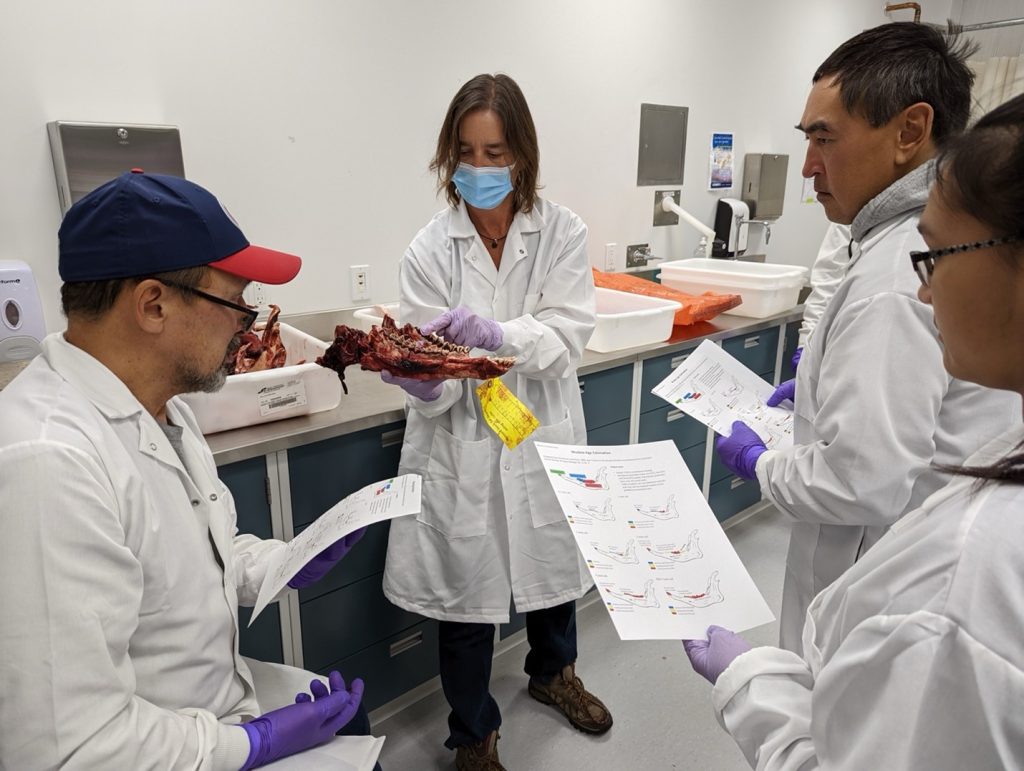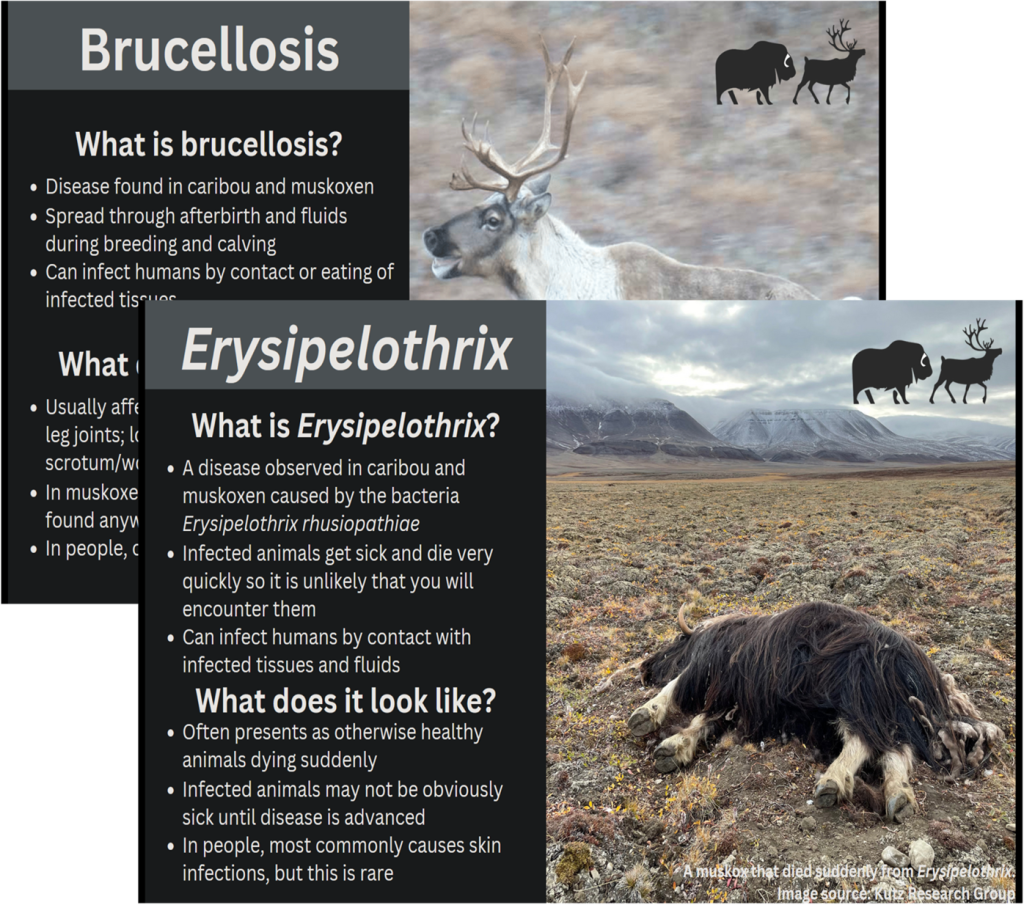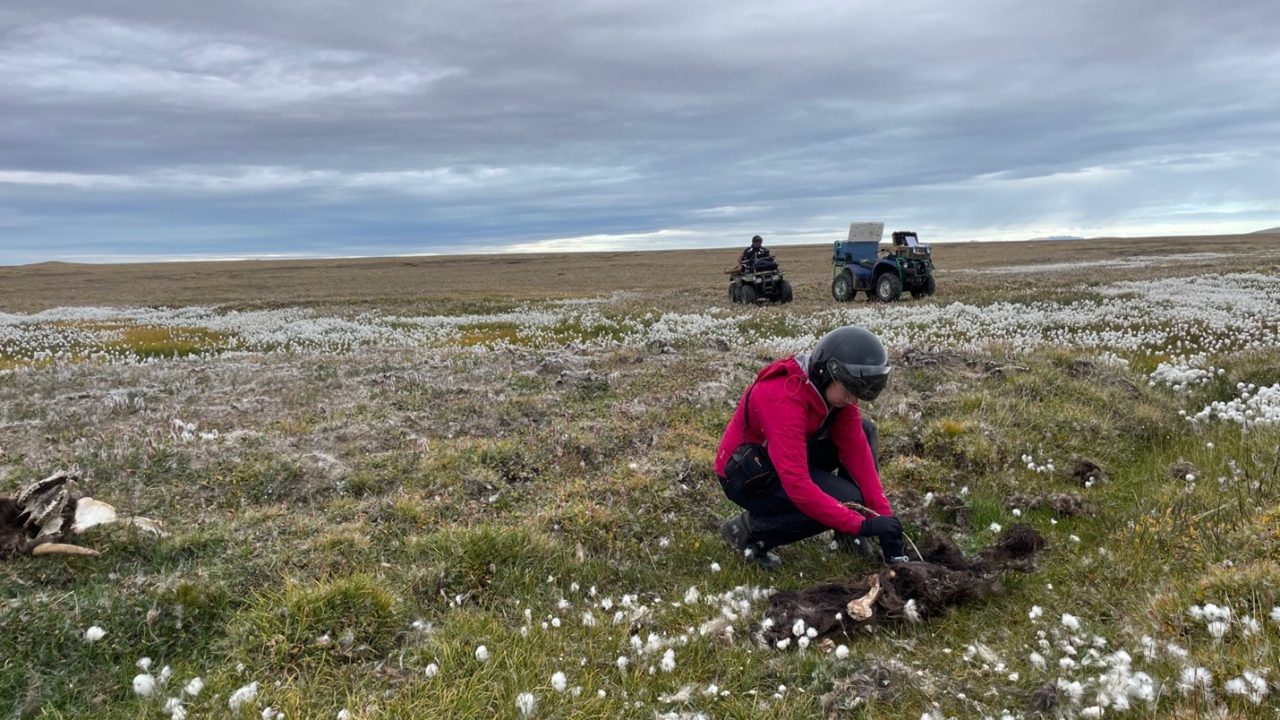Arctic Emerging Infectious Diseases
Two important bacteria – Erysipelothrix rhusiopathiae and Brucella suis biovar 4 – have recently emerged in Inuit Nunangat. These pose serious risks to the sustainability of muskox and caribou populations upon which communities depend. Moreover, Brucella represents a public health risk for those handling or consuming country foods. We aim to bring together Inuit traditional knowledge / Inuit Qaujimajatuqangit (IQ) and western knowledge to gain a better understanding of the diseases caused by these bacteria and how they are impacted by climate change, and then use this knowledge to protect human health and inform wildlife co-management. Ultimately, this project will increase capacity at the community level to detect and respond to emerging wildlife diseases; increase food security and safety; generate data to promote wildlife sustainability; and contribute to the translation and dissemination of IQ and its integration into research and management.

Since the onset of our project in May, 2022, we have held regular planning and implementation meetings among co-investigators. Our team comprises representatives from three hunters & trappers organizations from the communities of Ekaluktutiak, Kugluktuk, and Ulukhaktok situated in the Kitikmeot and Inuvialuit Settlement Regions in Nunavut and Northwest Territories; University of Calgary (Canada), and University of Glasgow and Queen’s University Belfast (UK).

We have made exciting progress on our three main objectives.
1.Understand why these diseases have increased in caribou and muskoxen
To evaluate patterns of transmission and emergence, we have sequenced nearly 200 bacterial whole genomes of Erysipelothrix and Brucella, the latter in partnership with the Canadian Food Inspection Agency. Initial analyses led by postdoctoral researcher Dr Sreejith (Sree) Radhakrishnan are helping us understand the historical spread over space and time, and transmission among different host species.
To assess the role of host species other than caribou and muskoxen in the maintenance and transmission of these bacteria, our team has collected samples from other potential host species, including from over 70 carnivores (primarily foxes and wolves). Community-driven sampling has been critical to this.
We have been conducting a multi-year outbreak investigation of Erysipelothrix in muskoxen on Ellesmere and Axel-Heiberg Islands, NU, which is the focus of McCaide Wooten’s PhD thesis. This is providing unique data to understand the persistence of the bacterium in the environment, and is contributing to our understanding of the role of other host species.

To better understand Inuit experiences and perspectives on the diseases caused by Erysipelothrix and Brucella, this year, PhD student Alexandra Kanters will be spending several months in our partner communities to document traditional knowledge on these diseases.
To elucidate the environmental drivers and risk factors for infection, we have recently recruited a new postdoctoral researcher, working with Professor Eric Morgan at Queen’s University Belfast, to lead on epidemiological modelling studies.
Finally, to test for virulence of the strain of Erysipelothrix found across the Arctic, Masters student Eugene Lau will be using an in vitro invertebrate model system.
2. Understand what risk these pathogens pose to people and animals
To determine the distribution of Brucella in the organs and meat of caribou and muskoxen to better understand infection risks, PhD student Mohammad Misbah Uddin and Sree are conducting a systematic literature review to summarize existing data. We have also developed molecular protocols for detecting the bacterium from DNA extracted from different tissues submitted by hunters as part of community-based monitoring.
Whilst in communities this year, in addition to collecting Inuit knowledge on the two bacterial diseases of interest, Alexandra will also be documenting traditional food handling practices that may be contributing to enhanced food safety.
A second new postdoctoral researcher will be exploring the possible impacts of E. rhusiopathiae and Brucella on caribou and muskox populations using mathematical modelling approaches.
3. Develop mitigation strategies to protect human health and conserve wildlife
A large part of this project objective focuses on training and capacity building. So far, our team has hosted a two-day wildlife disease workshop at Canadian High Arctic Research Station, Cambridge Bay, NU, and trained a community monitor (Ulukhaktok), technicians (Kugluktuk) and youth (Cambridge Bay) in wildlife sampling procedures.

Our project has supported (and is leveraging) ongoing community-based wildlife health surveillance based in all three partner communities. Since the onset of our project, samples have been submitted from 52 muskoxen and 37 caribou as part of hunter submissions.
Knowledge sharing is also a critical component of our project. We facilitated an ‘on-the-land’ camp in Ulukhaktok involving hunters, youths and researchers (coordinated by research associate Dr Fabien Mavrot), and we plan to organize similar events in the other communities. To increase hunter confidence in recognizing these diseases, we have developed updated harvester guidelines for dealing with sick animals.

We have shared regular project updates with partner communities and received valuable feedback to inform our approach and objectives. We have also shared our work at several scientific conferences, including at ArcticNet (2022) and the Arctic Ungulate Conference (2023). As part of a Masters project undertaken in collaboration with the Glasgow School of Art, HuiXin Chan has developed an initial version of a 3D animation video to help us share our project more widely. We are currently working with communities to finalize this video, including translation into Inuinnaqtun.


